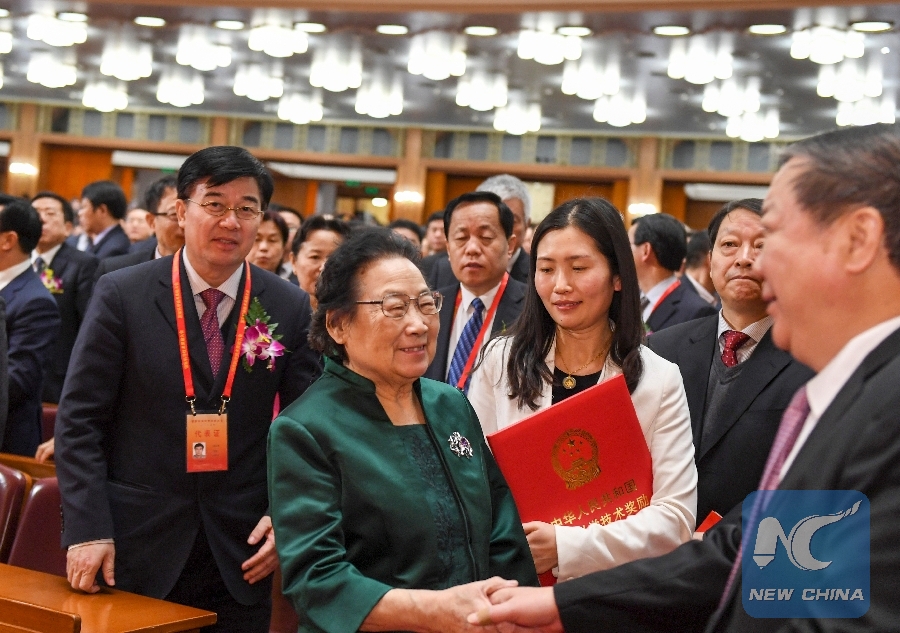
File Photo: Tu Youyou (front L), a pharmacologist of the China Academy of Chinese Medical Sciences, receives congratulations during an annual ceremony to honor distinguished scientists and research achievements in Beijing, capital of China, Jan. 9, 2017. (Xinhua/Li Xueren)
UNITED NATIONS, Feb. 11 (Xinhua) -- UN Secretary-General Antonio Guterres on Monday lamented the lack of opportunities for women and girls in science, technology, engineering and mathematics (STEM).
Women and girls remain "woefully under-represented" in STEM while they are vital in all these areas, said Guterres in a message on the International Day of Women and Girls in Science.
Gender stereotypes, a lack of visible role models and unsupportive or even hostile policies and environments can keep women and girls from pursuing these careers, he noted.
Skills in STEM drive innovation and are critical to achieving the Sustainable Development Goals, he said. "The world cannot afford to miss out on the contributions of half our population."
Guterres asked for concerted efforts to overcome the obstacles. "We must tackle misconceptions about girls' abilities. We must promote access to learning opportunities for women and girls, particularly in rural areas. And we must do more to change workplace culture so that girls who dream of being scientists, engineers and mathematicians can enjoy fulfilling careers in these fields."
"Let us ensure that every girl, everywhere, has the opportunity to realize her dreams, grow into her power and contribute to a sustainable future for all."
In 2015, the UN General Assembly designated Feb. 11 every year as the International Day of Women and Girls in Science to promote gender equality in STEM.
At present, less than 30 percent of researchers worldwide are women, according to data from the UN Educational, Scientific and Cultural Organization (UNESCO).
UNESCO data between 2014 and 2016 show that only around 30 percent of all female students select STEM-related fields in higher education. Globally, female students' enrolment is particularly low in information and communications technology (3 percent), natural science, mathematics and statistics (5 percent) and in engineering, manufacturing and construction (8 percent).

